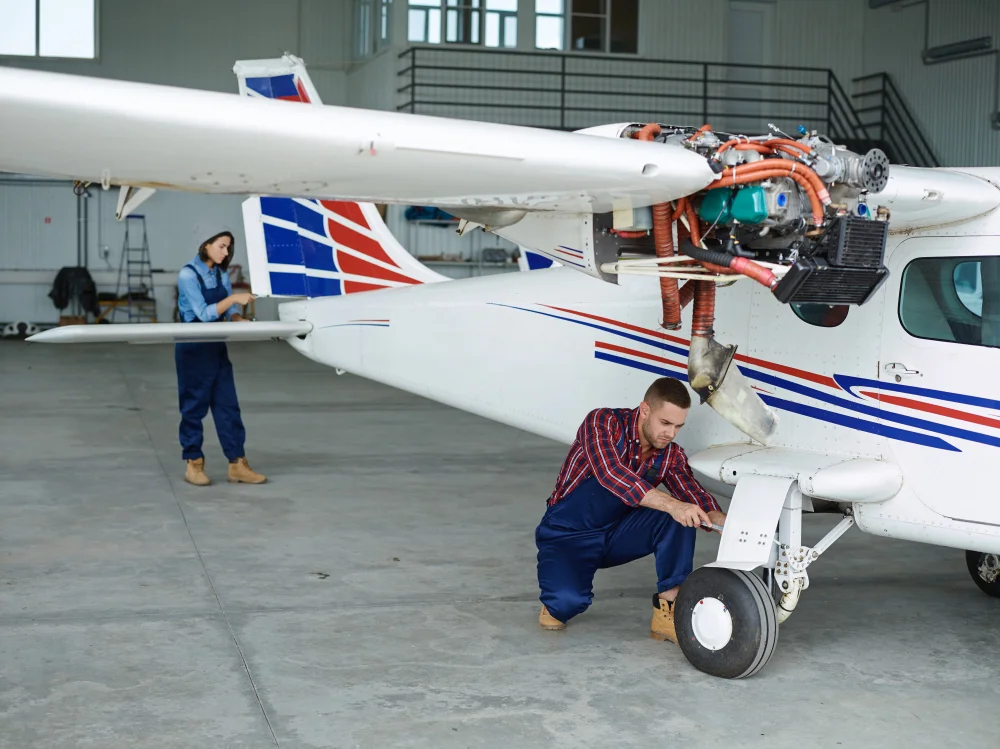Every component in aviation is critical to safety and performance. Engine mounts tend to go unnoticed among these. But they are necessary for the operation of the aircraft as a whole. They secure the engine and attach it to the plane frame, and they’re so unassuming. Even the most advanced aircraft would not be able to function as they should without them.
A Foundation for Stability
The engine mounts form the basis of the engine. They must support the engine, strong enough to support its weight and absorb its vibrations. Aircraft engines produce a lot of force, which, unless controlled, can lead to instability. Engine mounts minimize the potential damage caused by these vibrations, which could otherwise wear other components to destruction. This stability is very important during flight, especially in turbulent conditions or sudden maneuvers.
Without reliable mounts, vibrations could travel unchecked through the aircraft’s structure, causing passenger discomfort, possibly equipment failure, or, ultimately, structural failure. Engine mounts do more than just hold an engine in place, so that’s why. They keep the calm in an engine’s roar.
Enhancing Safety Through Design
Safety in aviation is non-negotiable. Engine mounts play a key role in this regard. Their design ensures that the engine remains securely attached, even under extreme stress. This attachment is critical during takeoffs, landings, and emergencies. Modern engine mounts are made from durable materials like titanium or stainless steel, which can withstand high temperatures and heavy loads. Engineers also rigorously test mounts, simulating the harshest conditions an aircraft might face.
Additionally, engine mounts include fail-safe mechanisms. These ensure that if one part of the mount fails, the rest will hold steady. This redundancy is a hallmark of aviation safety. It minimizes the risk of a catastrophic engine detachment, which could have devastating consequences.
Impact on Performance
Beyond safety, engine mounts significantly influence an aircraft’s performance. A secure and well-designed mount ensures that the engine operates efficiently. Misaligned or unstable engines can reduce fuel efficiency and impact thrust. This, in turn, affects the aircraft’s range and speed.
Moreover, properly mounted engines help maintain the aircraft’s balance. This balance is essential for smooth operation. Pilots rely on consistent engine performance to keep the aircraft stable during flight. Any misalignment could require additional corrections, complicating the flight.
Engine mounts also contribute to reducing noise levels inside the cabin. By minimizing vibrations, they ensure a quieter environment for passengers and crew. This improvement may seem minor, but it significantly enhances the overall flying experience.
A Quiet Workhorse
Aircraft engine mounts rarely get the attention they deserve. Passengers focus on the wings, engines, or cockpit, often unaware of these critical components. However, their role in every flight is undeniable. They endure immense pressures, temperatures, and forces, all while maintaining their integrity. Regular maintenance ensures they remain reliable. Inspecting engine mounts is a standard procedure in aircraft upkeep. Technicians look for signs of wear, cracks, or corrosion. Catching potential issues early prevents larger problems down the line. In addition to regular checks, advancements in materials and design continue to improve engine mounts.
Lighter, stronger mounts are being developed, enhancing both safety and performance. These innovations reflect the aviation industry’s commitment to constant improvement. With each new development, the durability and efficiency of these critical components are elevated, ensuring longer service life and reduced maintenance costs. The relentless pursuit of excellence drives further enhancements, fostering safer, more sustainable air travel for the future.
Conclusion
Engine mounts may not be the most visible part of an aircraft, but their impact is profound. They ensure engines stay in place, vibrations are controlled, and safety is prioritized. At the same time, they contribute to smoother, quieter, and more efficient flights.
Every flight owes its success, in part, to these unsung heroes of the skies. Though often overlooked, they are a testament to the meticulous engineering that defines modern aviation. Without them, the seamless experience of air travel would not be possible. These components, designed with precision and innovation, ensure safety, comfort, and efficiency at every altitude. Their reliability is paramount, enabling smooth operations no matter the conditions. The complexity behind every aircraft part highlights the collaboration between engineers, designers, and technicians, whose dedication makes global travel not only possible but reliable.
